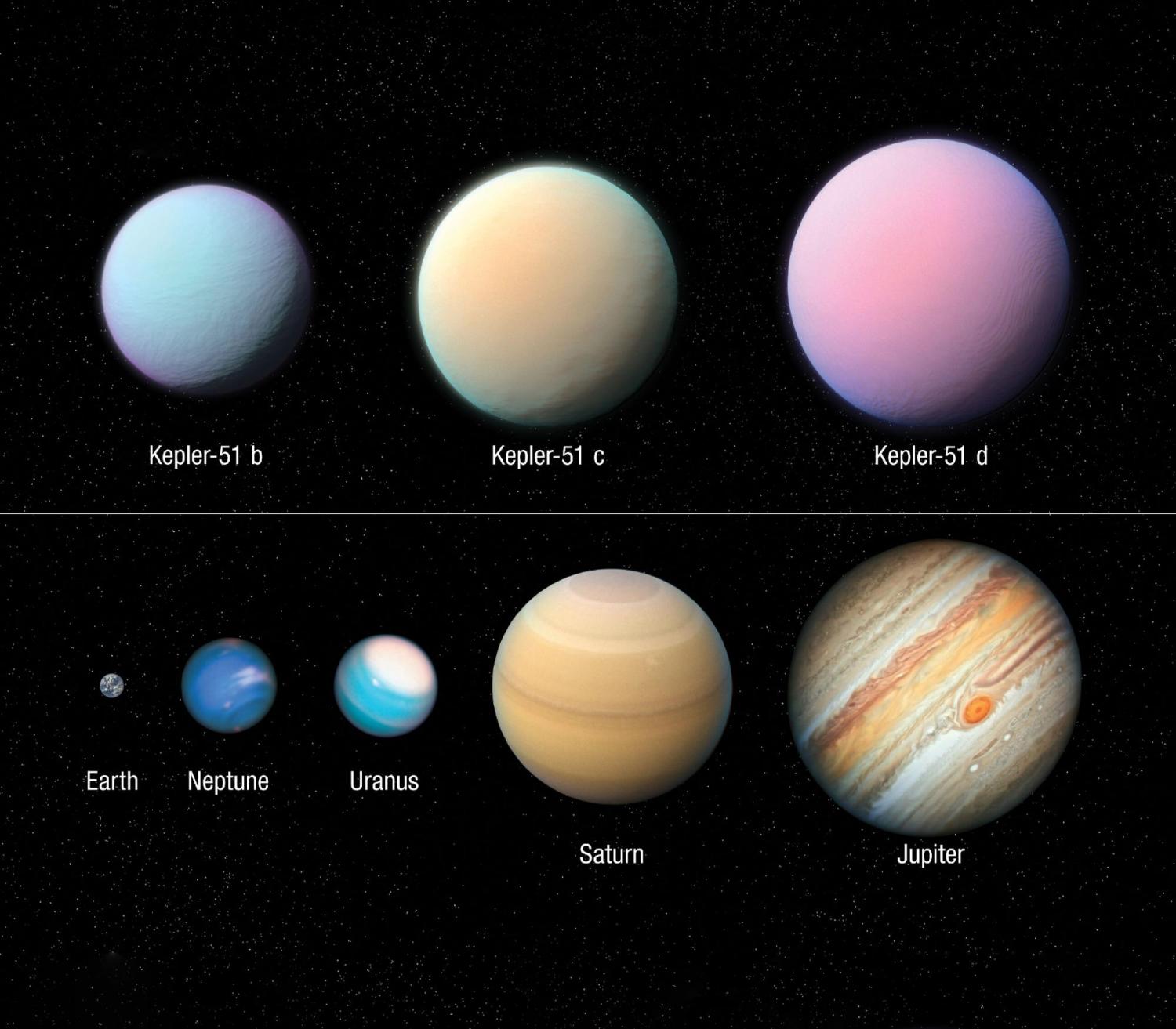Planets as fluffy as cotton candy
Behold the “super-puff” worlds of the Kepler 51 star system. This trio of planets, which orbit a star roughly 2,400 light-years from Earth, reach massive sizes but have the density of cotton candy.
Now, research led by Jessica Libby-Roberts, a graduate student in the Department of Astrophysical and Planetary Sciences, has taken a close look at what they’re made of. The team believes that the planets are mostly composed of hydrogen and helium gas and are surrounded by a thick haze of methane. “They’re very bizarre,” Libby-Roberts said.
Or maybe not. The team also discovered that these worlds may be in the process of shrinking. Give them a billion years, in other words, and they may look less like carnival treats and more like the denser planets we’re used to.

Fluffy planets: Kepler-51b, Kepler-51 c, Kepler-51 d. Planets: Earth, Neptune, Uranus, Saturn, Jupiter.
Principal Investigator
Jessica Libby-Roberts
Funding
NASA
Collaboration + support
NASA/ESA Hubble Space Telescope and Space Telescope Science Institute (STScI)

